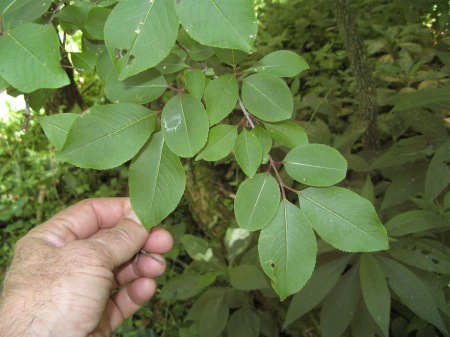White Dogwood
Flowering dogwood (cornus florida), as all Virginians should know, is the state tree. Early on, I noticed numerous dogwoods on my property – they are gorgeous in the spring when they bloom! On this trip, a friend told me that his grandfather had told him that if you find a lot of dogwoods on a piece of land that it means that the soil is good for farming. I do know that my property was once a pasture and that it was abandoned sometime in the mid-1940s. A forester pointed out to me the remains of long-dead bull pines, which he said are the first trees to colonize an abandoned pasture. I was also told that my property was once the ball field for the Cannaday School baseball team – they played against teams from Check and Floyd in the 1930s. I wish that I could find some more old-timers who could tell me more about the history of my property.
Anyway, back to dogwoods – the tree is very distinctive and hard to mis-identify, at least from the bark. It has a very unusual bark that has been described as being “gray brown, dividing into small scaly blocks” (from the Virginia Department of Forestry guide to common native trees of Virginia). A perfect description, indeed! Unfortunately, the sole picture I took of the bark came out rather unfocused so I won’t post it. The leaf can be a bit confusing, if you go by the plant guides. Some guides say that the edges of the leaves are smooth or wavy while others say that the edges are finely serrated. Most say that the veins curve and parallel the edge of the leaf. At any rate, the leaf in this picture is finely serrated and is most assuredly a dogwood, because I carefully noted what kind of trunk the branch was attached to!

The Virginia Department of Forestry site has this to say about the white dogwood:
“The brown to red wood is hard, heavy, strong and very close-grained. It was once used for textile shuttles and spools and for handles and mallets, but is seldom harvested today. Although the fruits are poisonous if eaten by humans, more than 35 species of birds and many large and small mammals are known to eat them. Deer and rabbits browse the foliage and twigs. Dogwood is planted as an attractive ornamental tree.”
A fungus, dogwood anthracnose, infects the white dogwood, along with other varieties of the tree. Apparently, some populations of dogwood have adapted to the fungus, because I have a lot of healthy dogwood. But I did see several dogwoods, damaged by the construction of the driveway, which exhibited symptoms of the blight.

Comments
White Dogwood — No Comments
HTML tags allowed in your comment: <a href="" title=""> <abbr title=""> <acronym title=""> <b> <blockquote cite=""> <cite> <code> <del datetime=""> <em> <i> <q cite=""> <s> <strike> <strong>